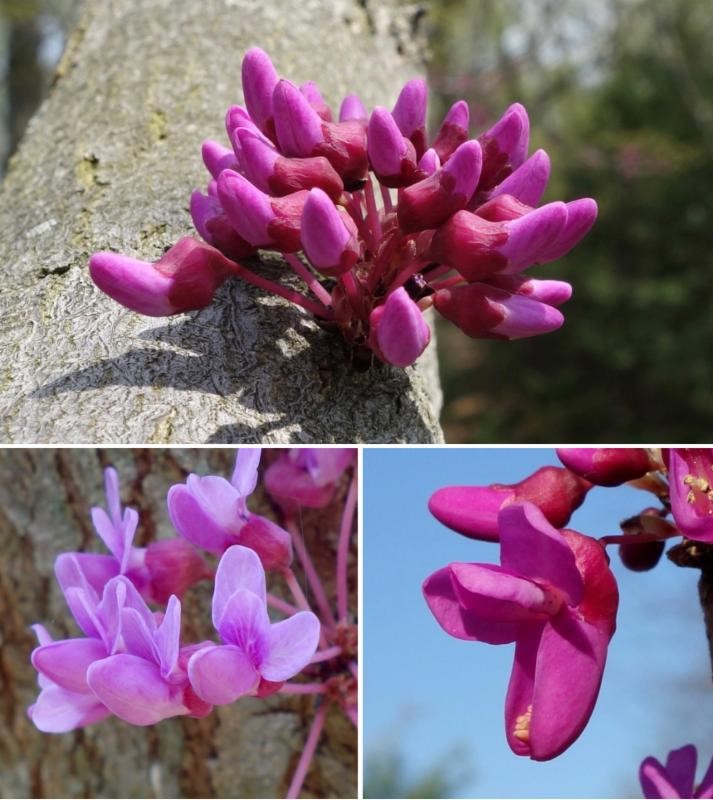So, what did Johann Wolfgang von Goethe have to say about redbuds (the genus Cercis)? Goethe’s wonderful observations on redbuds were published in his Italian Journey (Italienische Reise), at a time when he was deeply immersed in reflecting upon art, antiquities, and plant form―and importantly, spending time in botanical gardens to decipher the underlying principles of plant form. “This morning I came upon an unusual sight. In the distance I saw what looked like some tall poles which were the most beautiful purple all over. On closer inspection they turned out to be what in our hothouses is called the Judas tree and, by botanists, Cercis siliquastrum. Its violet, butterfly-shaped flowers blossom directly out of the trunk.”
As Goethe observed, redbuds produce flowers directly out of old woody trunks and branches, a phenomenon botanists refer to as cauliflory. The key to their spring floral display is that the flowers thus cover the entire tree, not just the newly emerged distal shoots. That, coupled with the fact that peak flowering in redbuds precedes the expansion of leaves, makes for a spectacular display!
Some redbuds at the Arnold Arboretum. Top, a cluster of flowers emerging directly out of the bark of the Arnold’s one Afghan redbud (Cercis griffithii; 94-73*A), in the Leventritt Shrub and Vine Garden; bottom left, flowers of the wonderful eastern redbud (Cercis canadensis; 10-68*B); AND our newest species of redbud on the grounds, the Chinese redbud (Cercis glabra; 637-2010*E), collected directly from the wild by a team from the Arnold Arboretum, Morris Arboretum, and Beijing Botanical Garden.
Worth knowing: Goethe wrote the foundational work on plant morphology (the study of plant form). The Metamorphosis of Plants (Versuch die Metamorphose der Pflanzen zu erklären), published in 1790, gave voice to a key insight that almost all of the organs of a plant’s shoot system are modifications of a leaf. A flower petal is a modified leaf, as is a stamen (in essence, a reproductive flavor of leaf that produces pollen), the spines of a cactus, bud scales, and so forth. As Goethe wrote in 1787: “While walking in the Public Gardens of Palermo, it came to me in a flash that in the organ of the plant which we are accustomed to call the leaf lies the true Proteus who can hide or reveal himself in vegetal forms. From first to last, the plant is nothing but leaf.” A reminder that great discoveries occur in public botanical gardens!
